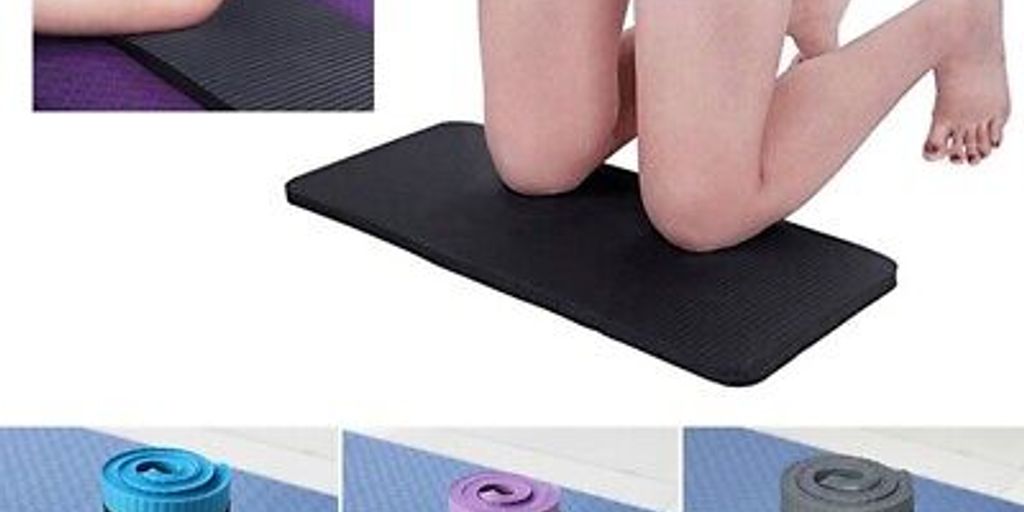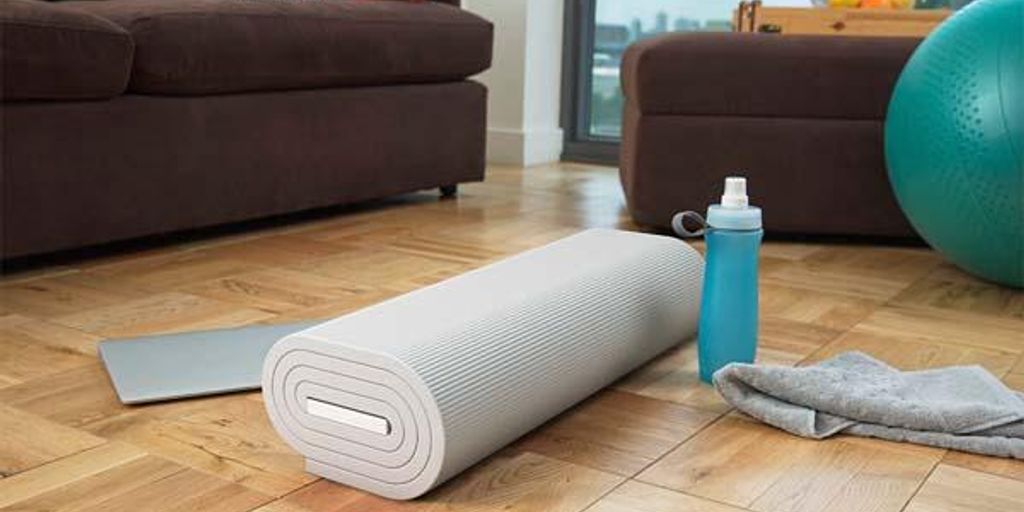
How to Prevent Your Yoga Mat from Being Slippery: Tips and Tricks
A slippery yoga mat can turn your practice from a calming experience into a frustrating one. Whether you're a beginner or an experienced yogi, maintaining a good grip on your mat is essential for both safety and performance. In this article, we'll explore various tips and tricks to help you prevent your yoga mat from being slippery, ensuring you can focus on your flow without any distractions.
Key Takeaways
- Understanding the reasons behind a slippery yoga mat can help you address the issue more effectively.
- Choosing the right material, thickness, and texture for your yoga mat can significantly improve your grip.
- Regular cleaning and proper maintenance are crucial for keeping your mat in optimal condition.
- Using accessories like yoga towels, grip socks, and mat sprays can enhance your mat's traction.
- Practicing proper techniques and storing your mat correctly can prevent slippage and extend its lifespan.
Understanding Why Your Yoga Mat Becomes Slippery
Material and Texture
The material and texture of your yoga mat play a significant role in its grip. Mats made from PVC or TPE often have different traction levels compared to natural rubber mats. A smoother surface can lead to more slippage, especially during intense sessions.
Sweat and Moisture
Sweat and moisture are common culprits behind a slippery yoga mat. When you sweat, the moisture can create a slick surface, making it difficult to maintain poses. Using a towel to absorb sweat can help mitigate this issue.
Wear and Tear
Over time, wear and tear can degrade the surface of your yoga mat, reducing its grip. Regular use can cause the material to break down, leading to a smoother, more slippery surface. Periodic replacement of your mat can help maintain optimal traction.
Understanding these factors can help you take proactive steps to keep your yoga mat grippy and safe for practice.
Choosing the Right Yoga Mat for Better Grip
Selecting the ideal yoga mat can significantly enhance your practice by providing better grip and stability. Material Options play a crucial role in determining the mat's grip. Mats made from natural rubber or polyurethane often offer superior traction compared to PVC mats. Thickness and Density are also important factors; a mat that's too thick may cause instability, while one that's too thin might not provide enough cushioning. Aim for a balance that suits your practice style. Surface Texture can make a big difference as well. Textured surfaces can help prevent slippage, especially during sweaty sessions. We found that the AmazonBasics yoga mat's non-slip grip makes it suitable for hot yoga practices, while its cushioning level ensures you can enjoy each pose comfortably.
Proper Cleaning Techniques to Maintain Grip
Regular Cleaning Routine
Maintaining a regular cleaning routine is essential for keeping your yoga mat grippy. Consistent cleaning helps remove sweat, dirt, and oils that can accumulate and cause slipperiness. Aim to clean your mat after every practice session to ensure it remains in top condition.
Cleaning Solutions to Use
Choosing the right cleaning solution is crucial. Opt for mild, natural cleaners that won't damage the mat's material. You can use a mixture of water and a few drops of essential oils like tea tree or lavender, which have natural antibacterial properties. Avoid harsh chemicals that can degrade the mat's surface.
Drying Your Mat Correctly
Proper drying is just as important as cleaning. After washing, lay your mat flat or hang it to air dry completely before rolling it up. This prevents moisture from getting trapped, which can lead to mold and mildew. Ensure your mat is thoroughly dry to maintain its grip and longevity.
Regular maintenance and proper cleaning techniques are key to ensuring your yoga mat remains slip-free and durable for years to come.
Using Accessories to Enhance Grip
Yoga Towels and Rugs
Yoga towels and rugs can be a game-changer for those struggling with a slippery mat. These accessories are designed to absorb sweat and provide an additional layer of grip. Placing a yoga towel on top of your mat can significantly reduce slippage, especially during intense sessions. Look for towels with non-slip backing to ensure they stay in place.
Grip Socks and Gloves
Grip socks and gloves are another excellent solution to prevent slipping on your yoga mat. These accessories come with rubberized grips on the bottom, offering extra traction. They are particularly useful for hot yoga or any practice that induces a lot of sweating. Wearing grip socks and gloves can help you maintain stability and focus on your poses without worrying about slipping.
Mat Sprays and Solutions
Mat sprays and solutions are specially formulated to enhance the grip of your yoga mat. These products can be sprayed directly onto the mat's surface to create a tackier texture. Using grip-enhancing products can make a noticeable difference in your practice. Be sure to choose a spray that is compatible with your mat's material to avoid any damage.
For the best results, combine these accessories with a regular cleaning routine and proper storage to maintain your mat's grip over time.
Practicing Techniques to Reduce Slippage
Proper Hand and Foot Placement
Ensuring correct hand and foot placement is crucial for maintaining stability on your yoga mat. Proper alignment helps distribute your weight evenly, reducing the chances of slipping. Focus on spreading your fingers and toes wide to create a stable base.
Using Props for Stability
Incorporating props like blocks and straps can significantly enhance your stability. These tools provide additional support, allowing you to hold poses longer and with better form. Consider using a yoga block under your hands in poses like Downward Dog to improve grip.
Adjusting Your Practice Environment
The environment where you practice yoga can also impact your mat's grip. Ensure the floor is clean and free of dust, as debris can make your mat slippery. Additionally, practicing in a cooler room can help reduce sweat and moisture, further enhancing your mat's traction.
A non-slip yoga mat is essential for maintaining stability during your practice. Improved stability allows you to hold poses longer and with better form, making your yoga sessions more effective and enjoyable.
DIY Solutions to Improve Mat Traction
Homemade Cleaning Solutions
Creating your own cleaning solutions can be an effective way to maintain your yoga mat's grip. A mixture of water and vinegar is a popular choice. Simply combine equal parts of water and white vinegar in a spray bottle, and add a few drops of essential oil for a pleasant scent. Spray the solution onto your mat and wipe it down with a clean cloth.
Texturizing Your Mat
If your mat has become too smooth, you can add texture to it to improve traction. One method is to use a fine-grit sandpaper to gently roughen the surface. Be careful not to overdo it, as you don't want to damage the mat. Another option is to sprinkle a small amount of sea salt on the mat, let it sit for 24 hours, and then wipe it off.
Applying Natural Grip Enhancers
Natural substances like aloe vera gel or diluted lemon juice can be applied to your mat to enhance its grip. Apply a thin layer of aloe vera gel to the mat and let it dry completely before use. For lemon juice, mix it with water in a 1:2 ratio, spray it on the mat, and wipe it down. These natural solutions can help you maintain a non-slip surface without using harsh chemicals.
Taking the time to implement these DIY solutions can significantly improve your yoga practice by ensuring your mat remains slip-free and safe to use.
Storing Your Yoga Mat to Prevent Slipperiness
Proper Storage Conditions
To maintain the grip of your yoga mat, it's crucial to store it in a cool, dry place. Avoid damp or humid areas as they can cause moisture buildup, leading to a slippery surface. Ensure your mat is clean before storing it to prevent any residue from affecting its texture.
Rolling vs. Folding
When it comes to storing your yoga mat, rolling is generally better than folding. Rolling helps maintain the mat's integrity and prevents creases that can lead to uneven surfaces. If you must fold it, do so loosely to avoid creating permanent lines.
Avoiding Direct Sunlight
Direct sunlight can degrade the material of your yoga mat over time, making it more prone to slipperiness. Store your mat in a shaded area to preserve its texture and longevity.
Proper storage of your yoga mat is essential for maintaining its grip and ensuring a safe practice environment. By following these tips, you can avoid disasters like slipping during your sessions.
Proper storage of your yoga mat is essential to prevent slipperiness and ensure a safe practice. Make sure to keep your mat clean and dry, and store it in a cool, dry place. For more tips on maintaining your yoga gear, visit our website.
Conclusion
Preventing your yoga mat from being slippery is essential for maintaining a safe and effective practice. By regularly cleaning your mat, using a towel or yoga rug, and choosing the right mat material, you can significantly reduce the risk of slips and enhance your overall yoga experience. Additionally, ensuring proper storage and maintenance of your mat will prolong its lifespan and keep it in optimal condition. Implement these tips and tricks to enjoy a more stable and enjoyable yoga practice.
Frequently Asked Questions
Why does my yoga mat get slippery during practice?
Yoga mats can become slippery due to sweat and moisture, the material and texture of the mat, and general wear and tear over time.
What materials provide the best grip for yoga mats?
Materials like natural rubber, polyurethane, and certain textured PVC offer better grip compared to basic PVC or foam mats.
How often should I clean my yoga mat to maintain its grip?
It's recommended to clean your yoga mat after every few uses with a gentle cleaning solution and to deep clean it at least once a month.
Can I use homemade solutions to clean my yoga mat?
Yes, you can use homemade solutions such as a mixture of water and vinegar or water and mild dish soap to clean your yoga mat.
What accessories can help enhance the grip of my yoga mat?
Accessories like yoga towels, grip socks, gloves, and mat sprays can significantly improve the grip of your yoga mat.
How should I store my yoga mat to prevent it from becoming slippery?
Store your yoga mat in a cool, dry place, rolled up rather than folded, and avoid exposing it to direct sunlight to maintain its grip.


